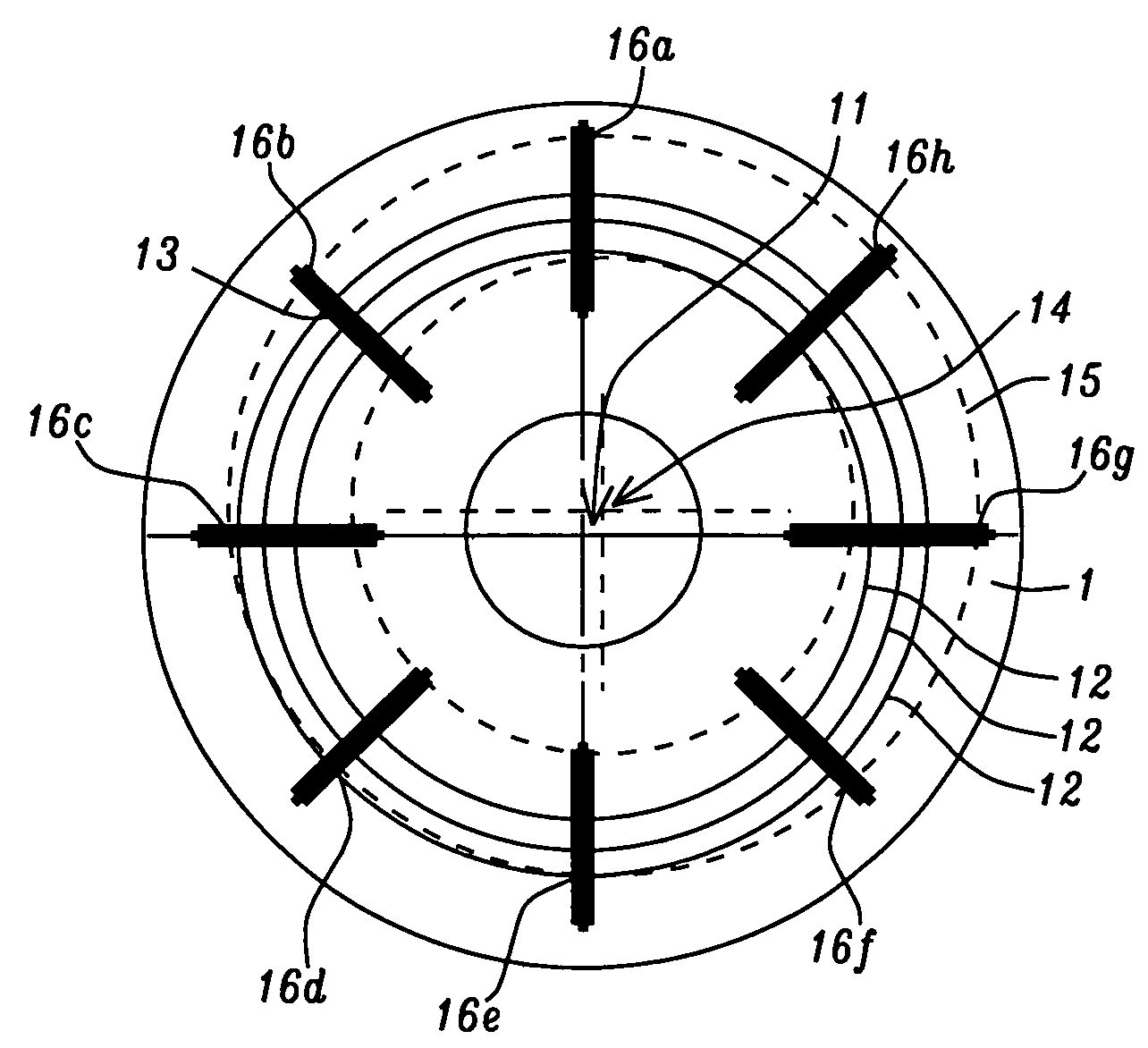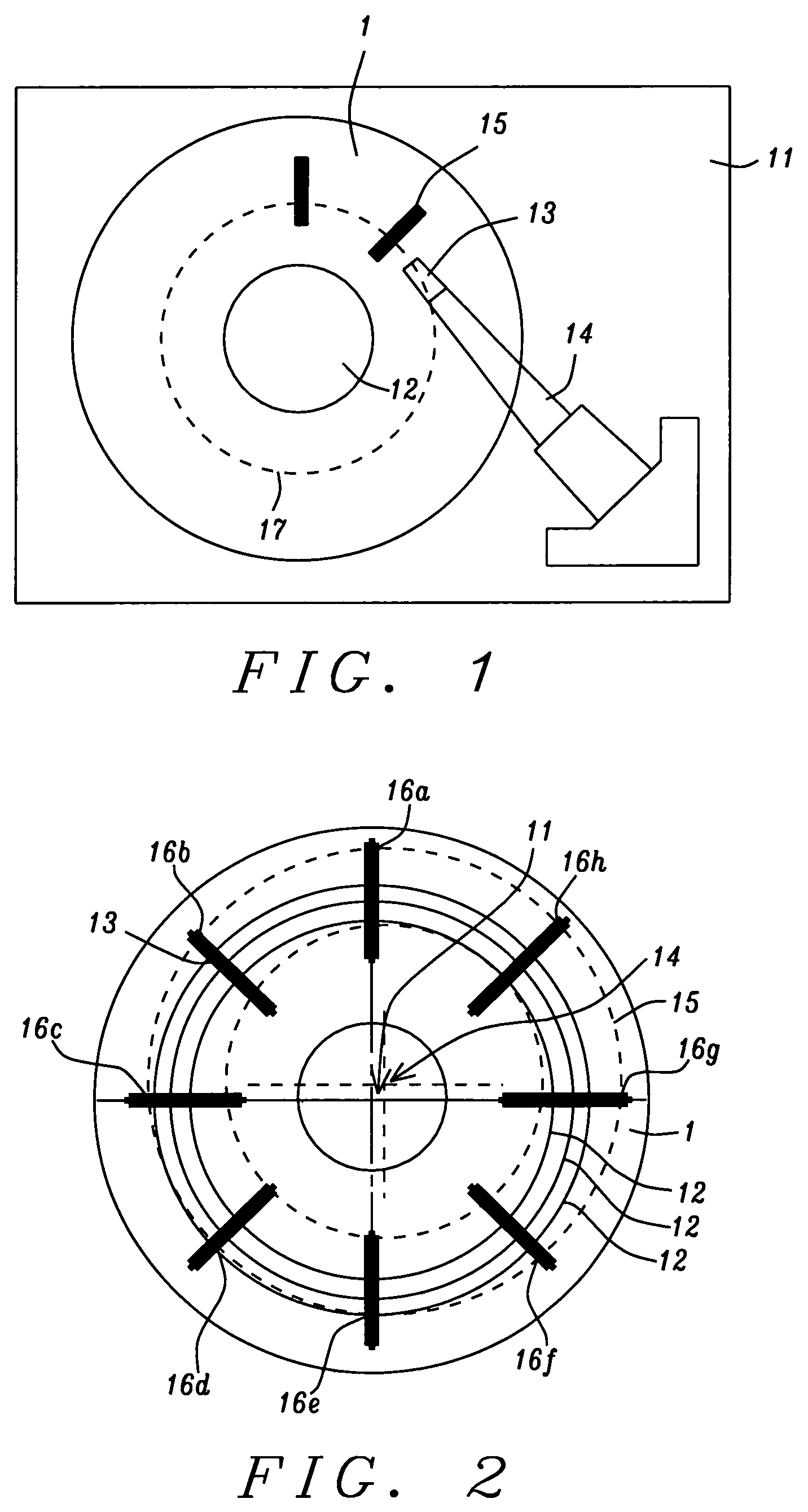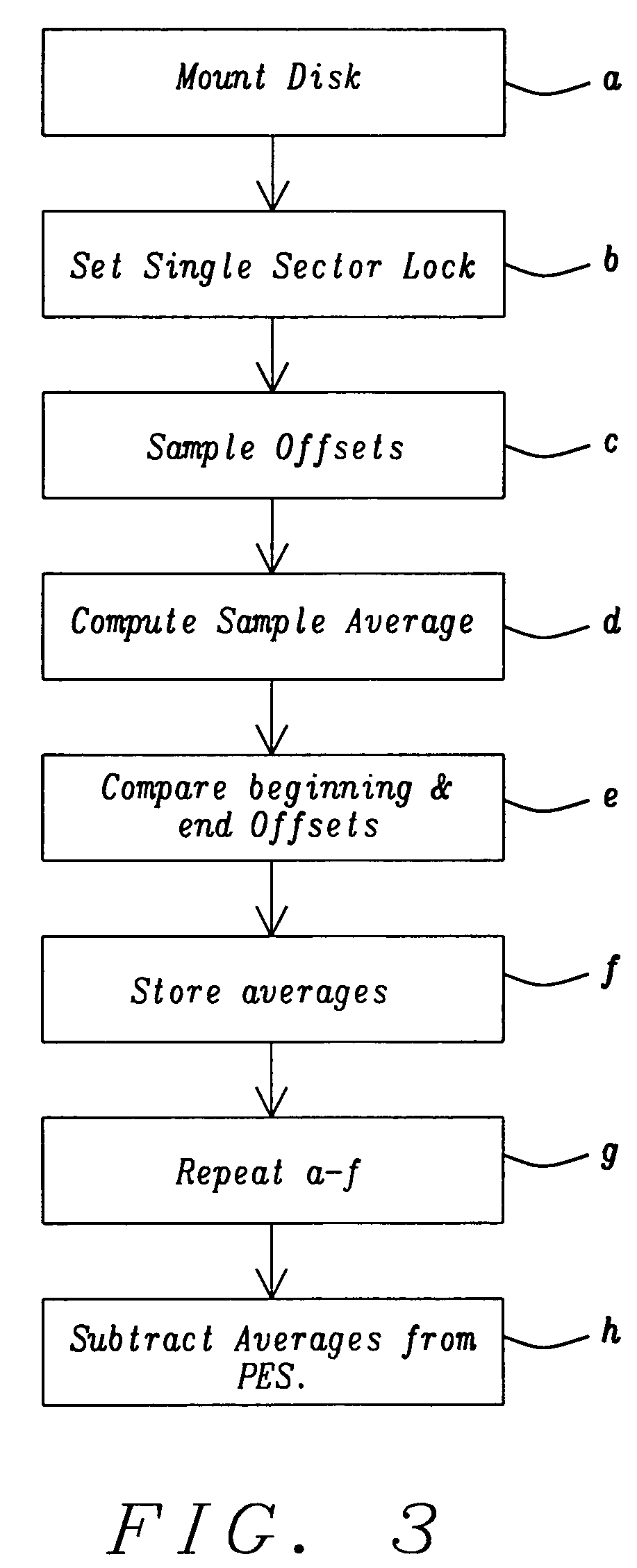Magnetic head tester using magnetic disk with pre-written servo
a technology of servo data and magnetic disk, which is applied in the direction of magnetic recording, instruments, data recording, etc., can solve the problems of discrepancy between tracks, high cost and time consumption, and add to the expense of the tester, so as to achieve more accurate, reproducible and efficient process, and more accurate and efficient process
- Summary
- Abstract
- Description
- Claims
- Application Information
AI Technical Summary
Benefits of technology
Problems solved by technology
Method used
Image
Examples
Embodiment Construction
[0034]The present invention teaches a method of operating a magnetic read / write head testing apparatus (commonly referred to as a “spin stand”) using disks on which servo track information has been externally pre-written in a dedicated servo track writer. The head testing apparatus, therefore, lacks the servo-writing mechanisms that are now a part of the dedicated servo-writer.
[0035]Referring first to FIG. 1, there is shown a schematic illustration of a head testing apparatus (spin stand) that does not include a servo track writing apparatus such as a micro-positioner. In accord with the present invention, such servo track writing apparatus is not required in the head tester because the magnetic disk to be mounted therein is already pre-written with the necessary servo information through the use of an external servo track writing apparatus (not shown). FIG. 1 schematically shows such a typical head testing apparatus. The apparatus, sometimes called a “spin stand,” includes a base (...
PUM
| Property | Measurement | Unit |
|---|---|---|
| ri | aaaaa | aaaaa |
| magnetic head testing | aaaaa | aaaaa |
| angular width | aaaaa | aaaaa |
Abstract
Description
Claims
Application Information
 Login to View More
Login to View More - R&D
- Intellectual Property
- Life Sciences
- Materials
- Tech Scout
- Unparalleled Data Quality
- Higher Quality Content
- 60% Fewer Hallucinations
Browse by: Latest US Patents, China's latest patents, Technical Efficacy Thesaurus, Application Domain, Technology Topic, Popular Technical Reports.
© 2025 PatSnap. All rights reserved.Legal|Privacy policy|Modern Slavery Act Transparency Statement|Sitemap|About US| Contact US: help@patsnap.com



